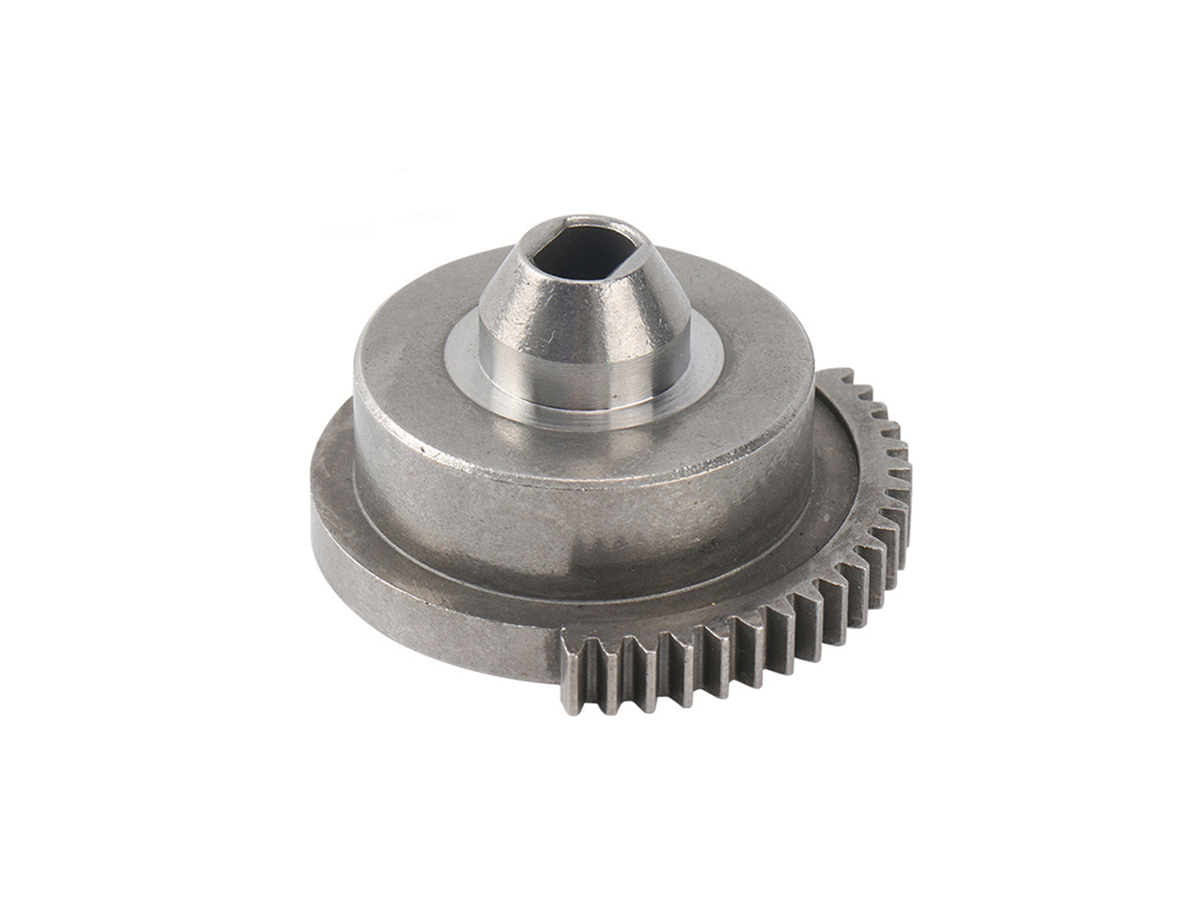Stainless Steel Rapid Molding for Corrosion-Resistant Parts in Harsh Environments
Introduction
Stainless steel rapid molding is an advanced manufacturing solution widely used for producing durable, corrosion-resistant components suitable for harsh environmental conditions. Industries such as marine, oil and gas, and chemical processing rely on rapid molding to quickly fabricate high-quality stainless steel parts with tight tolerances (±0.05 mm), using popular alloys including SUS304, SUS316L, and 17-4PH.
Rapid molding significantly reduces production timelines, ensuring parts achieve excellent corrosion resistance, high strength, and reliable performance even under extreme environmental exposure.
Stainless Steel Material Properties
Material Performance Comparison Table
Stainless Steel Grade | Tensile Strength (MPa) | Yield Strength (MPa) | Corrosion Resistance (PREN) | Density (g/cm³) | Applications | Advantages |
|---|---|---|---|---|---|---|
520-720 | 210-300 | 18-20 | 7.93 | General equipment, fittings | Good formability, strong corrosion resistance | |
530-680 | 220-310 | 24-28 | 8.00 | Marine hardware, chemical equipment | Excellent corrosion resistance, particularly against chloride exposure | |
1100-1300 | 1000-1200 | 15-17 | 7.78 | Valves, pumps, high-stress components | High strength, good corrosion resistance, excellent hardness | |
800-950 | 450-620 | 34-38 | 7.80 | Offshore components, heat exchangers | Outstanding corrosion resistance, superior mechanical properties |
Material Selection Strategy
Selecting appropriate stainless steel alloys for rapid molding involves balancing corrosion resistance, strength requirements, and environmental factors:
SUS304 Stainless Steel: Recommended for general-purpose corrosion-resistant parts requiring good mechanical strength (520-720 MPa tensile) and high formability, widely used in fittings and standard equipment.
SUS316L Stainless Steel: Optimal for marine and chemical environments due to its high PREN values (24-28), offering superior resistance to chloride-induced corrosion.
17-4PH Stainless Steel: Preferred for high-strength, high-hardness components (tensile strength up to 1300 MPa), suitable for valves, pumps, and other highly stressed applications.
SUS2205 Duplex Stainless Steel: Ideal for extremely harsh environments, providing exceptional corrosion resistance (PREN 34-38) and high mechanical strength, frequently used in offshore and chemical processing industries.
Rapid Molding Processes for Stainless Steel Components
Rapid Molding Process Comparison
Rapid Molding Process | Accuracy (mm) | Surface Finish (Ra µm) | Typical Uses | Advantages |
|---|---|---|---|---|
±0.1 | 1-6 | Precision marine parts, chemical components | High accuracy, fine surface details | |
±0.3 | 10-25 | Large structural components, heavy equipment | Cost-effective for large parts | |
±0.1 | 5-15 | Medium-volume corrosion-resistant parts | Good repeatability, consistent finish |
Rapid Molding Process Selection Strategy
Selecting the suitable rapid molding method for stainless steel parts depends on part complexity, required accuracy, and production volume:
Investment Casting (ASTM A743): Preferred for intricate, precision components with high dimensional accuracy (±0.1 mm), commonly applied in marine and chemical processing parts needing complex geometries and fine surfaces.
Sand Casting (ASTM A351): Economically efficient for large-size components requiring moderate accuracy (±0.3 mm), ideal for structural elements in industrial equipment and offshore applications.
Permanent Mold Casting (ASTM A297): Recommended for medium-volume production of corrosion-resistant stainless steel parts with good accuracy and consistent surface finishes, suitable for standard mechanical components.
Surface Treatments for Stainless Steel Components
Surface Treatment Comparison
Treatment Method | Surface Roughness (Ra µm) | Corrosion Resistance | Temperature Limit (°C) | Applications | Key Features |
|---|---|---|---|---|---|
0.5-1.0 | Excellent (ASTM A967) | 400 | Marine hardware, chemical equipment | Enhanced corrosion protection, clean finish | |
≤0.5 | Superior (ASTM B912) | 350 | Precision parts, marine fittings | Extremely smooth surface, superior corrosion resistance | |
0.2-0.5 | Superior (ASTM B117) | 600 | High-wear marine components, chemical processing parts | Exceptional hardness, improved corrosion and wear resistance | |
0.4-1.2 | Good (AMS 2759/10) | 550 | Pumps, shafts, high-strength parts | Increased surface hardness, enhanced durability |
Surface Treatment Selection Strategy
Applying appropriate surface treatments improves corrosion resistance and durability, ensuring stainless steel components reliably perform in harsh conditions:
Passivation: Essential for marine and chemical environments, providing superior corrosion resistance (ASTM A967) and ensuring clean, oxide-free surfaces.
Electropolishing: Optimal for precision parts requiring extremely smooth surfaces (Ra ≤0.5 µm) to maximize corrosion resistance, critical for chemical and marine applications.
PVD Coatings: Ideal for high-wear and corrosive environments, significantly enhancing surface hardness and corrosion resistance up to 600°C, suitable for pumps, valves, and critical equipment.
Nitriding: Recommended for stainless steel components needing improved surface hardness (up to 65 HRC), suitable for high-load applications like shafts and mechanical seals.
Typical Prototyping Methods
Rapid Molding Prototyping: Quickly produces highly accurate stainless steel prototypes (±0.05 mm) for rigorous functional and environmental testing.
Stainless Steel CNC Machining: Offers precise finishing (±0.005 mm tolerances) to finalize molded components, ensuring exact fitment and optimal surface finish.
Stainless Steel 3D Printing: Enables rapid prototype creation of complex geometries (±0.1 mm accuracy) ideal for initial design verification.
Quality Assurance Procedures
Dimensional Inspection: High-precision CMM inspection according to ISO 10360-2 standards (±0.002 mm).
Corrosion Testing: Salt spray testing exceeding 1000 hours (ASTM B117).
Surface Roughness Analysis: Verification per ISO 4287, ensuring Ra values ≤3.2 µm.
Metallurgical Testing: Microstructural analysis conforming to ASTM E112.
Mechanical Testing: Tensile and yield strength tests (ASTM E8 standards).
Non-Destructive Testing (NDT): Ultrasonic (ASTM E2375) and radiographic (ASTM E1742) inspections to guarantee internal component integrity.
Compliance with ISO 9001: Maintaining consistent manufacturing quality and reliability.
Key Industry Applications
Marine hardware and fittings
Chemical processing equipment
Offshore components
High-stress pumps and valves
Related FAQs:
What stainless steel grades provide the best corrosion resistance?
Which rapid molding process is ideal for stainless steel parts?
How do surface treatments improve corrosion resistance?
What quality standards apply to stainless steel molded parts?
Which industries commonly use stainless steel rapid molding?

